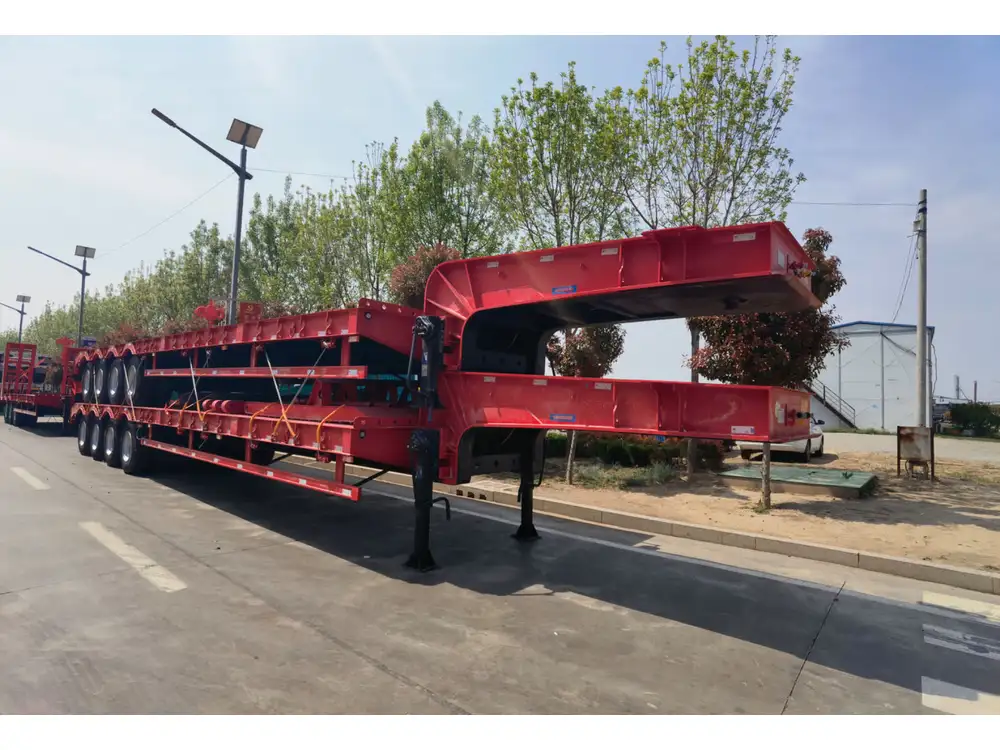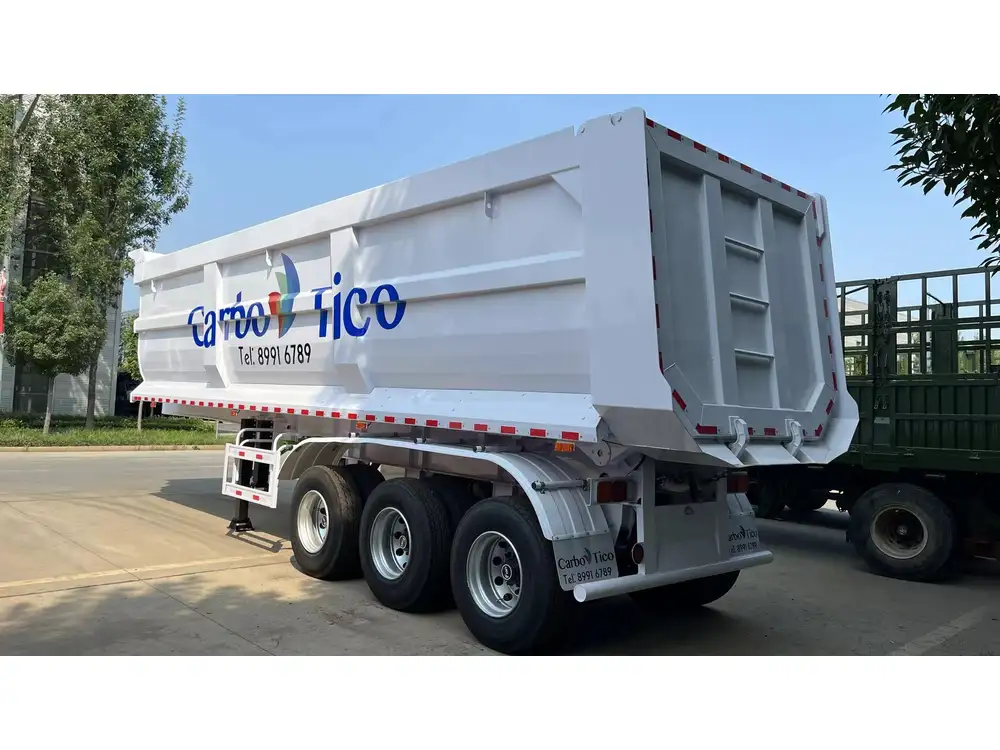When it comes to logistics and transportation, understanding the capacity of semi-trailers is crucial for efficient planning and execution. Particularly, knowing how many gallons a semi-trailer can hold is a key metric that can impact both operational costs and regulatory compliance. This guide will provide an in-depth analysis of semi-trailer capacities, explore various types of trailers, delve into crucial factors influencing capacity, and help you optimize your logistics strategy.
Types of Semi-Trailers and Their Capacities
Before we dive into the specific capacities, it’s essential to note that semi-trailers come in various types, each designed for specific cargo. The type of trailer directly influences its storage capacity.
| Trailer Type | Description | Average Capacity (Gallons) |
|---|---|---|
| Flatbed Trailer | Open trailer without sides, used for heavy machinery and construction materials. | Not applicable for liquid cargo. |
| Box Trailer | Enclosed trailer for transporting goods requiring protection from elements. | 100 – 400 gallons (varies by design) |
| Tank Trailer | Designed specifically to transport liquids, especially chemicals and fuels. | 5,000 – 6,000 gallons |
| Reefer Trailer | Refrigerated trailer for transporting perishable goods, equipped with a cooling unit. | 200 – 300 gallons (for insulation and cooling systems) |
| Livestock Trailer | Specialized for transporting animals, with ventilation and compartments. | Not applicable for liquid cargo. |
| Lowboy Trailer | Designed for transporting heavy equipment with a low deck height. | Not applicable for liquid cargo. |
The Prominence of Tank Trailers in Liquid Transportation
Among the different types of semi-trailers, tank trailers are the most commonly associated with liquid transportation. These trailers are critical in industries such as petroleum, chemical manufacturing, and food and beverage. Their design optimizes volume, ensuring the safe and efficient transportation of substances.

Capacity Breakdown of Tank Trailers
Tank trailers can differ significantly in their capacity depending on various factors, including:
Size of the Tank: Capacity ranges typically from 5,000 to 6,000 gallons. However, it’s essential to account for various configurations that might extend or limit this measurement.
Type of Liquid: The density and characteristics of the liquid being transported can impact how much can be loaded. For instance, hazardous materials often require space regulations that limit total capacity for safety.
Regulatory Compliance: Each state may have specific regulations limiting the maximum allowable weight—a factor intrinsically tied to how many gallons can be loaded.
Understanding Volume Measurements in Transportation
To grasp how many gallons a semi-trailer can hold, it’s necessary to explore the conversion from gallons to liters and cubic feet, as these measurements are often interrelated.
- 1 Gallon = 3.785 Liters
- 1 Cubic Foot = 7.48 Gallons
Volume Calculation Examples
Here’s how to visualize tank trailer capacities in different measurement systems:
| Capacity (Gallons) | Capacity (Liters) | Capacity (Cubic Feet) |
|---|---|---|
| 5,000 gallons | 18,927 liters | 668.5 cubic feet |
| 6,000 gallons | 22,712 liters | 805.6 cubic feet |

Factors Influencing the Capacity of Semi-Trailers
Knowledge of how many gallons a semi-trailer can hold includes understanding influencing factors which can significantly vary by individual operational scenarios:
1. Trailer Design
The construction and design of a trailer can have a profound effect on its overall capacity. Custom-built trailers for specific needs often exhibit unique features that enhance their efficiency.
2. Regulatory Constraints
Transportation regulations at the federal and state level can also limit maximum load capacities—particularly with hazardous materials. Operators must be aware of these regulations to avoid legal ramifications.

3. Load Weight Considerations
It is vital to factor in not just volume, but weight. The maximum legal weight for a combination of tractor and trailer (usually about 80,000 pounds for a standard semi-truck) can limit how many gallons of liquid can be transported based on the liquid’s density.
How to Optimize Loading Capacity
To maximize your semi-trailer’s efficiency, consider these optimization strategies:
Assess Your Liquid’s Density
Understanding the specific gravity of the liquid you are transporting will help you calculate the limits of each load. For instance, a denser liquid like diesel fuel (approximately 7.1 lbs/gal) compared to water (approximately 8.34 lbs/gal) will affect how many gallons can be loaded without exceeding weight limits.

Utilize Innovative Trailer Designs
Investing in advanced trailer designs can increase efficiency. Some modern tankers come equipped with baffles to help stabilize liquids, allowing for higher volumes despite safety regulations.
Regular Maintenance Checks
Ensuring the trailer is well-maintained prevents unforeseen leaks that could otherwise limit capacity and compliance. Implementing a regular inspection schedule will keep your operations smooth and trouble-free.
Safety Regulations for Liquid Transportation
Safety becomes paramount when dealing with liquid transportation. Regulatory bodies, such as the Department of Transportation (DOT) in the U.S., provide guidelines that affect both the design and operation of semi-trailers, especially tank trailers.

Key Safety Laws to Consider
Hazardous Materials Regulations (HMR): These dictate how hazardous materials must be stored, labeled, and transported.
Vehicle Weight Laws: Ensure that you remain compliant with federal and local weight regulations to prevent penalties and accidents.
Driver Training and Certification Requirements: All operators should be adequately trained in handling specific loads to ensure both safety and compliance.
Conclusion: Making Informed Decisions
Understanding how many gallons a semi-trailer can hold is more than a simple metric; it integrates into a broader schema of logistics, regulation, and operational efficiency. By focusing on the type of semi-trailer, the liquids being transported, regulatory constraints, and effective loading strategies, companies can optimize their supply chain processes.
Ultimately, businesses that harness this comprehensive knowledge will not only enhance their operational capabilities but also ensure safe and efficient logistics, fostering long-term growth and reliability in the ever-competitive transportation sector.
FAQs
What is the maximum capacity I can load on my tank trailer? It varies based on the trailer type, the liquid’s density, and weight regulations. Standard capacities range from 5,000 to 6,000 gallons.
Are there specific regulations for transporting hazardous liquids? Yes, there are strict guidelines from the DOT and other agencies that govern the transportation of hazardous materials.
How do I calculate the total weight of my cargo? Multiply the number of gallons by the specific weight of the liquid being transported.
Can my trailer be customized for higher efficiency? Absolutely! Custom designs can be implemented based on your specific transport needs and cargo types.
What should I prioritize in my logistics strategy? Focus on understanding your capacity requirements, regulatory compliance, safe practices, and regular maintenance for maximal operational efficiency.
By comprehensively exploring the capabilities and operational factors associated with semi-trailers, this guide aims to provide all stakeholders within the logistics and transportation ecosystem with the insights needed for advanced decision-making.



